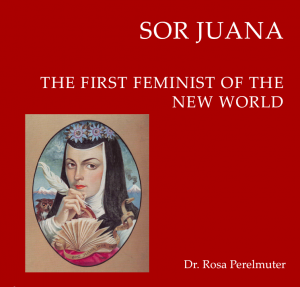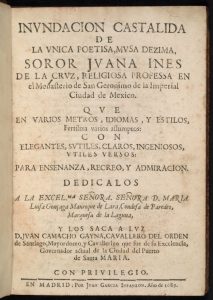
The Rare Book Collection teamed with its friends at UNC’s Institute for the Study of the Americas to present a wonderful lecture last night in celebration of Hispanic Heritage Month. Over 130 people turned out to hear Prof. Rosa Perelmuter speak about the Mexican Sister (Sor) Juana Inés de la Cruz, who became famous in Europe following the publication of her writings in Madrid at the end of the 17th century.
On display for the evening was Sor Juana’s first book in its first edition, Inundación castálida (1689), a relatively recent addition to the RBC and subject of an earlier blog post. It was purchased on the Leslie Weil Memorial Fund, and members of the Weil family, David and Emily Weil, were in attendance, making it a particularly joyous occasion.

The title-page of the book refers to Sor Juana as the Tenth Muse, an astonishing epithet for a Spanish colonial woman writer who was up until then unpublished. The concept of fama—fame, reputation, rumor, renown—and Sor Juana’s reaction to it were the principal topics of Prof. Perelmuter’s address.
The author of two books on Sor Juana, Prof. Perelmuter identified three classes of response to fama from the cloistered nun, all of them characterized by rejection. Prof. Perelmuter went on to term Sor Juana a feminist with a small “f”. Although Sor Juana believed a woman should have access to education, she did not seek to lead others in intellectual pursuits at her monastery.
Celebrated in her own lifetime and right after her death, Sor Juana fell from popularity in the 18th century. Her poetry was revived in the 20th century and is now taught as part of the Baroque literary canon at universities across the United States, including UNC-Chapel Hill. Fama, Sor Juana has, whether she wanted it or not.

